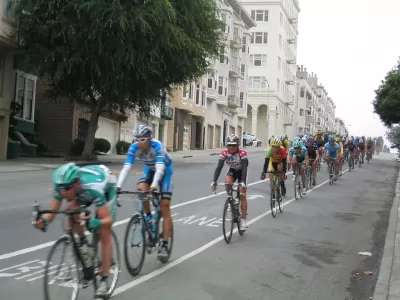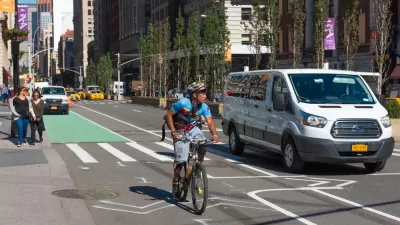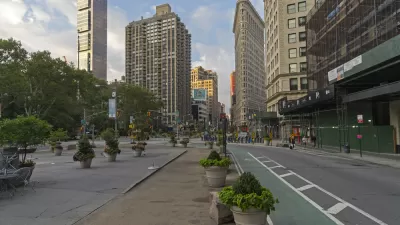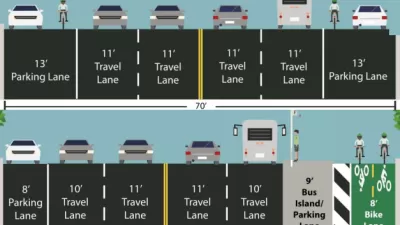Urban bike infrastructure is plagued by three related problems: design, politics, and security.

Slate writer Henry Grabar blasts cities for bike networks that leave cyclists unsafe and uninspired. Drawing on his experiences as a bicycle commuter in New York, he illustrates common "design flaw[s]" that are "born of politics but compounded by disinterested policing."
On the design front, Grabar describes bike lanes that are poorly protected from traffic and paths that end abruptly, creating gaps in the system: "The network is only as strong as its weak points, which can be very weak."
He attributes those weak points to the fact that power over New York’s bike lanes goes to community boards—resulting in a patchwork governance process that de-prioritizes holistic planning:
Transportation planning is the quintessential issue that should not be left to local determination. But bike lanes, for some reason, are subject to the whims of neighborhoods.
Nor, he suggests, can New Yorkers expect action from the police on cars that park or drive in unprotected bike lanes, forcing cyclists to swerve into traffic or ride on the sidewalk.
"If the NYPD can’t keep the lanes clear, there’s no point in having them," he writes.
FULL STORY: Why Bicycling Infrastructure Fails Bicyclists

Planetizen Federal Action Tracker
A weekly monitor of how Trump’s orders and actions are impacting planners and planning in America.

Congressman Proposes Bill to Rename DC Metro “Trump Train”
The Make Autorail Great Again Act would withhold federal funding to the system until the Washington Metropolitan Area Transit Authority (WMATA), rebrands as the Washington Metropolitan Authority for Greater Access (WMAGA).

The Simple Legislative Tool Transforming Vacant Downtowns
In California, Michigan and Georgia, an easy win is bringing dollars — and delight — back to city centers.

The States Losing Rural Delivery Rooms at an Alarming Pace
In some states, as few as 9% of rural hospitals still deliver babies. As a result, rising pre-term births, no adequate pre-term care and "harrowing" close calls are a growing reality.

The Small South Asian Republic Going all in on EVs
Thanks to one simple policy change less than five years ago, 65% of new cars in this Himalayan country are now electric.

DC Backpedals on Bike Lane Protection, Swaps Barriers for Paint
Citing aesthetic concerns, the city is removing the concrete barriers and flexposts that once separated Arizona Avenue cyclists from motor vehicles.
Urban Design for Planners 1: Software Tools
This six-course series explores essential urban design concepts using open source software and equips planners with the tools they need to participate fully in the urban design process.
Planning for Universal Design
Learn the tools for implementing Universal Design in planning regulations.
Smith Gee Studio
City of Charlotte
City of Camden Redevelopment Agency
City of Astoria
Transportation Research & Education Center (TREC) at Portland State University
US High Speed Rail Association
City of Camden Redevelopment Agency
Municipality of Princeton (NJ)





























